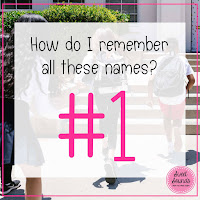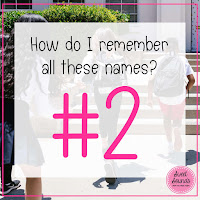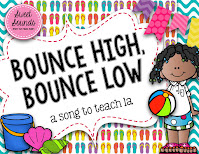Looking for an easy last minute game for upper elementary music classes? Need a game that reviews content, but older students still love to play (even when they're too cool?!)? Trashketball is my upper elementary kids' new favorite game. It requires zero prep and very little setup - and you can use it as an assessment tool as well!
The setup:
- Divide the class in half.
- Put a trashcan at the front of the room.
- Pull out a basket of paper recycling.
- Open any interactive rhythm game, pull out any set of flashcards, or grab a list of questions about any musical topic that you've covered. (You choose!)
How to play:
- Each student gets a turn to come up to the board and answer a question.
- If they answer correctly, they get to pick a piece of paper "trash" from the recycling bin, wad it up, and try to make a basket in the trashcan. (or make a basket in the recycling bin - this tends to have a wider opening)
- If they get the basket, they get a point for their team! (Name the teams if you like: ten points for Gryffindor!)
It's so easy! I was shocked that they actually liked this game, but they request trashketball EVERY game day.
Extensions / Differentiate:
- After playing a few rounds of trashketball with the "regular" rules, go wild! Add multiple spots for shooting - 2 points from the middle of the room, 3 points from the corner. Designated hitter. Answer two in a row for double points. Pro Tip: Wait until they get a little bored before changing the rules; after a few different days of play, I say, "It was fun playing the easy version, let's make it harder."
- For a short period or an extra large class - have students quickly select a "dream team" from their half of the room to compete. If those 4-5 people have a turn and there's still time, you can draw names (ie. close your eyes and point to the seating chart) for bonus turns.
- For my small neurodiverse class - get a point for trying the rhythm, a point for saying it correctly, then get a piece of trash and make a basket just for fun! They loved this game, but you might have to alter the rules a bit - give multiple chances to make a basket, etc.
- Start with the easier rhythms, then work up to the newest and most unfamiliar patterns.
- Don't forget to have a roster handy so you can "keep track of who's had a turn," AKA give assessment points to those who nailed it and make a note of kids who need more practice or individual attention later.
- Have a super-shy student who doesn't want to shoot a basket? Have them assign a designated hitter! Or whatever they call it in basketball. :-p
Why save this for upper grades?
Honestly, my little guys would really enjoy trashketball - maybe not the competition aspect (they don't understand how to lose), but they enjoy trying to make a basket with every paper towel, so I think this would appeal to them.
But.
They will also play Bee, Bee Bumblebee and All Around the Buttercup and Here Comes a Bluebird and every other singing game. Without complaint and begging to play more.
So I don't really NEED this game until end of 3rd grade/4th/5th. It might seem counterintuitive, but I really like having new games to introduce to my upper elementary kids.
So yes - you can play trashketball with the littles, if you need to, but if you already have a good collection of singing games that they like, save it for when they start to get squirrely - end of 3rd or middle of 4th or whenever that happens for each group of students.
What content works well with this game?
The possibilities are literally endless, but here are some ideas for topics:
- rhythmic patterns like these or these
- melodic patterns (singing solfege) like these
- melodic patterns (note naming)
- identifying and defining terms (dynamics, tempo, standard or iconic notation symbols, etc.)
- identify the title from a melodic or rhythmic phrase of a known song (“name that tune”)
- any music flashcards
- identifying instruments, or instrument families
- music analysis (identifying errors, historical period, meter, form)
- improvising a phrase with help
- open-ended questions
- ice breaker questions (favorites, would you rather; there's no right answer - so everyone gets to try to make a basket)
Why is this the perfect game?
It's a little tongue-in-cheek, of course, but this game fits just about any content and any group of learners.
It can be altered for multiple choice, short answer, creative expression, ice-breakers, you name it!
Even adults will agree to participate in an ice-breaker question if you let them shoot a basket for their team afterwards. ;-)
I think for me there are many reasons it's perfect for older students - but the main one is they LOVE shooting baskets with trash. It's something they like to do and we add a learning objective. BAM. That's what makes it perfect.
Disclosure:
My amazing co-teacher Kirsi Seagraves gets full credit for teaching me about the wonders of trashketball. She came up with it during Covid when her students wanted to play a basketball-style rhythm game, but they weren't allowed to touch the same object without sanitizing. Thus, trashketball was born. I took the idea to my classes and ran with it! Thanks Kirsi!








































